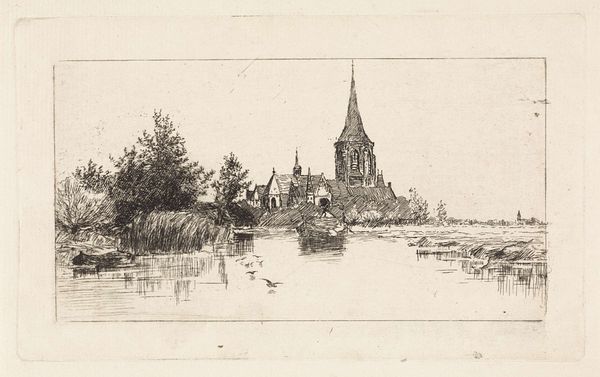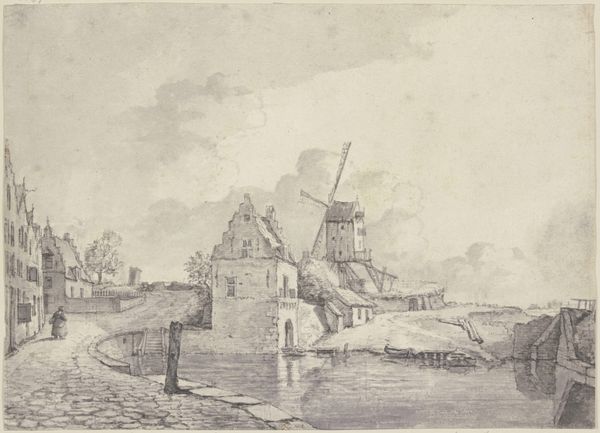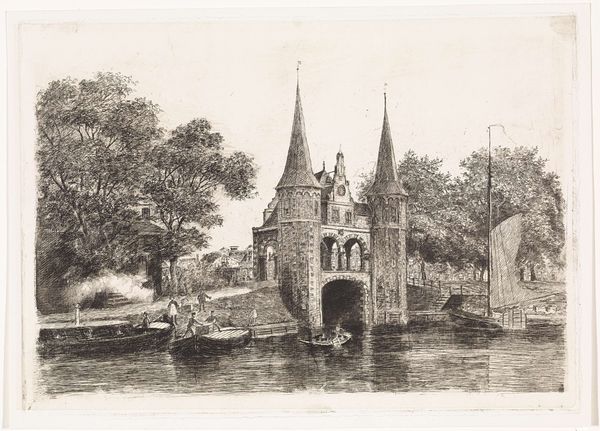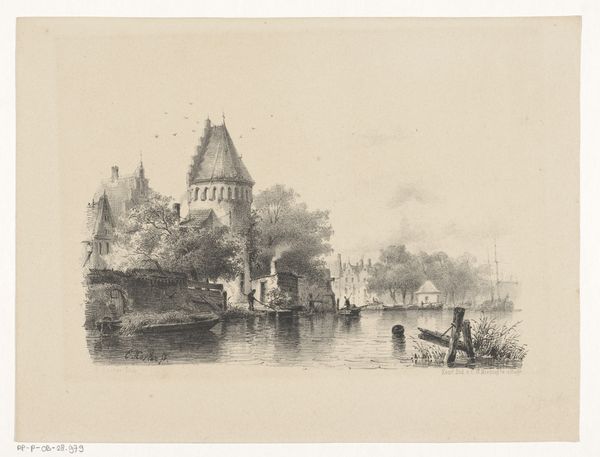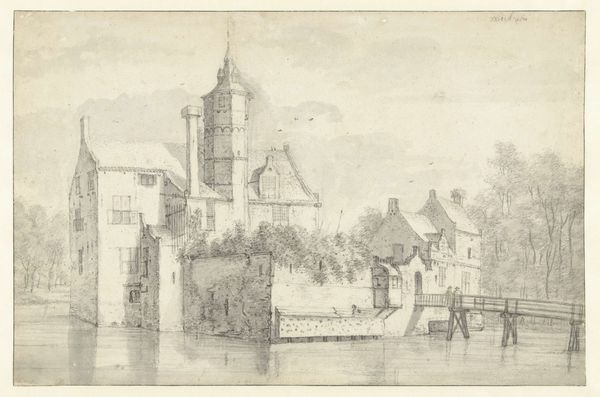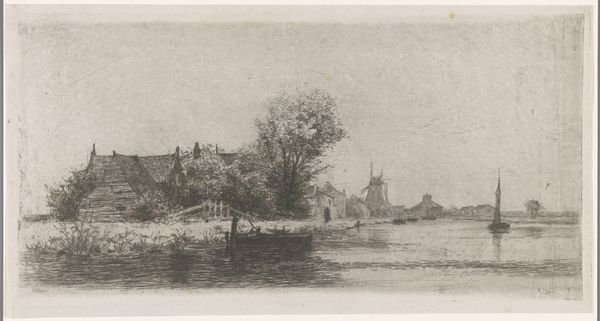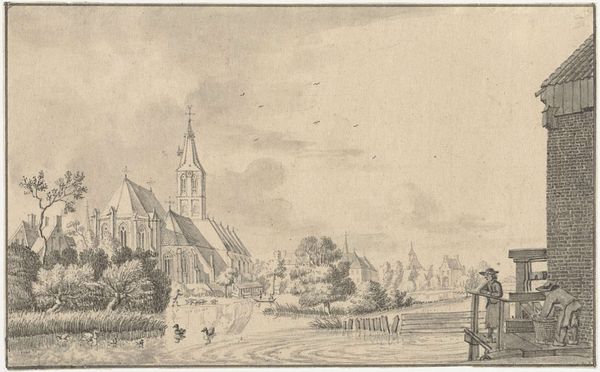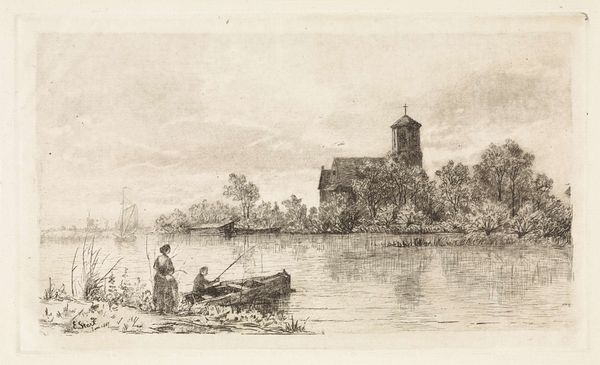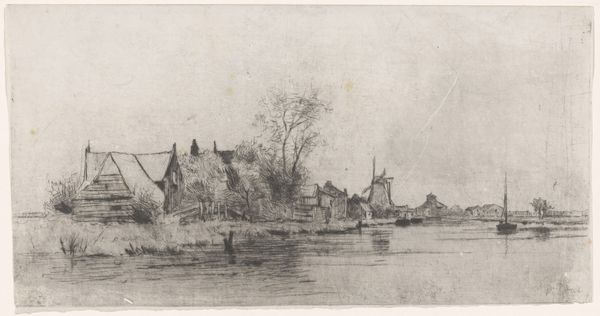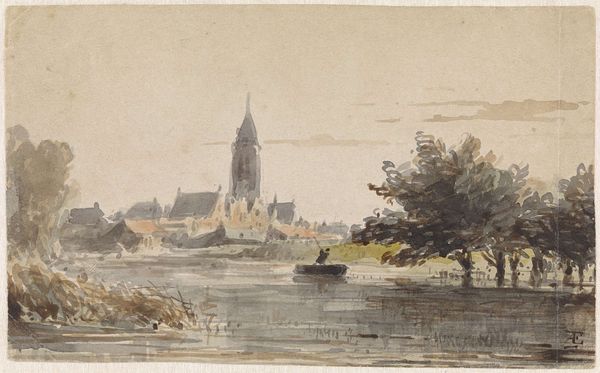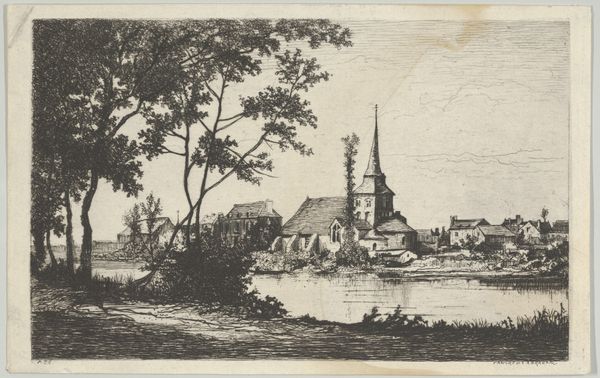
drawing, pencil
#
drawing
#
landscape
#
pencil
#
cityscape
#
realism
Dimensions: height 195 mm, width 294 mm
Copyright: Rijks Museum: Open Domain
Curator: Instantly, I’m struck by its quiet melancholy. There's a stillness in the water, the buildings feel sturdy and timeworn. It evokes a deep sense of the past. Editor: You're observing "Landscape with a Tower on the Water", created in 1851 by A. van Ameyden van Duyn Dzn. The Rijksmuseum houses this pencil drawing, and it exemplifies Dutch Realism with its cityscape theme. Curator: Realism certainly grounds it. It seems he aimed to capture the scene as it was, unadorned. Note the painstaking detail in the tower’s stonework and reflections on the water’s surface. But the light… the softness of the pencil rendering… It gives it a nostalgic quality. Editor: This work allows us to consider 19th-century urban expansion and its visual representation. We see here how architecture symbolizes a town's evolving socio-economic structure, how a particular artist responds to urbanization’s impacts, even considering what function that tower might have played for locals. Curator: It appears that Van Duyn Dzn. masterfully contrasted architectural weight and density with an airy, almost dreamlike atmosphere. The lines are sharp where they define form but dissolve in gentler shading elsewhere. What a dichotomy to contemplate! Editor: Absolutely. This aesthetic and atmospheric contrast could imply broader contemporary trends. For example, industrial developments during that era contrasted directly with the slow, pre-industrial life in parts of the Netherlands, or some may have romanticized the simplicity of traditional rural environments compared to complex urban environments, so works like this capture something much broader than this view. Curator: Indeed. The very choice of pencil, with its inherent capacity for both precision and subtle tonal gradation, points to those wider discussions on artistic techniques in his day. And for us now? I can appreciate how it represents artistic movements that sought truth and clarity in depicting everyday life. Editor: By engaging in this process together, and in different ways, it allows the artwork and context to enrich the experiences and perspectives of those engaging in it now.
Comments
No comments
Be the first to comment and join the conversation on the ultimate creative platform.
